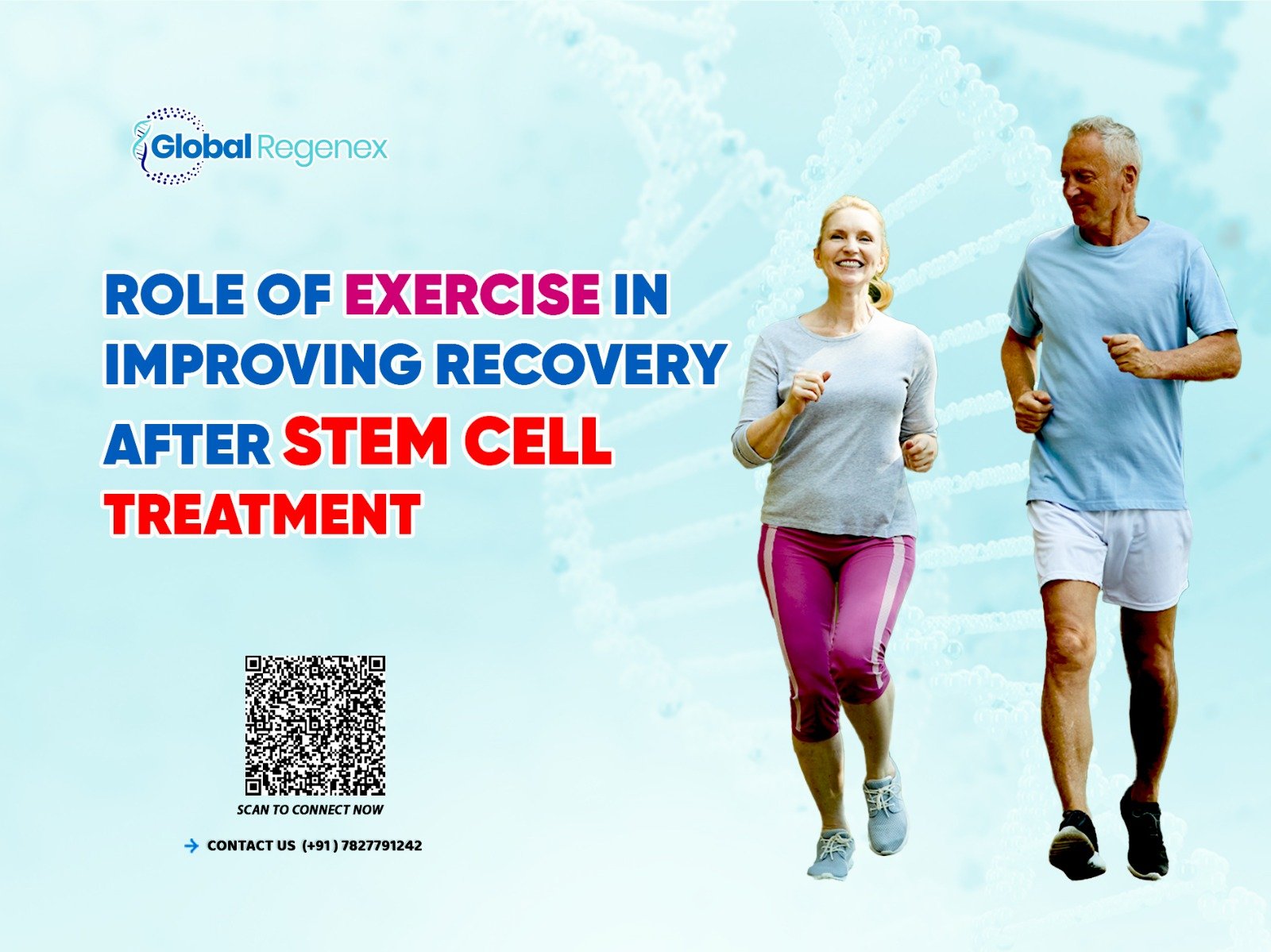Summary: As stem cell therapy is getting more recognized as an advanced treatment, exercise also plays an important role in boosting recovery time for stem cell treatment patients. By improving circulation in the patient’s body, reducing stiffness, and supporting tissue regeneration, the right kind of physical activity can improve the overall effectiveness of treatment. Learn how exercise helps and which movements are best suited for a safe, faster recovery.
With the effective progress in the field of regenerative medicine, stem cell therapy shines the brightest, giving hope for patients with severe conditions. These unique cells use the body’s cells to help repair and restore damaged tissues and reduce inflammation. Although the ability of stem cells is promising, the real success of the treatment depends more on factors other than just the treatment.
As you know, the body needs time, care, and the right lifestyle practices to enhance the results. Among the most effective ways to support healing is doing exercise. Doing the right physical activities after stem cell therapy can improve recovery outcomes significantly and help patients return to daily activities more quickly.
Why Recovery Matters After Stem Cell Therapy?
Stem cell therapy works by stimulating the body’s natural healing process. The success of treatment largely depends on how well the patients recover afterward. Poor recovery habits, such as stress and inactivity, can lead to slower progress. On the other hand, adapting safe exercise routines can boost your healing, prevent stiffness, and strengthen the treated area.
Role of Exercise in Supporting Stem Cell Healing
Exercise is more than just movement; it is a way of promoting the body’s optimal healing. Here’s how it helps:
Increases Blood Flow: Improved circulation brings oxygen and nutrients into the treated tissues, facilitating quicker regeneration.
Increases Stem Cell Function: Slight exercise stimulates natural growth factors that enhance the efficiency of stem cell treatment.
Decreases Stiffness and Enhances Mobility: Consistent movement lubricates joints and avoids the formation of scar tissue.
Assists with Pain and Inflammation Management: Low-impact activity can decrease swelling and alleviate pain naturally.
Types of Exercise to Do After Stem Cell Therapy
Low-Impact Cardio
Doing low-impact cardio like walking, swimming, or cycling is gentle on the joints while improving cardiovascular health and circulation.
Strength Training
Adapting light resistance training using weights or resistance bands helps you rebuild muscle strength and supports joint stability.
Flexibility Exercise
Doing stretching, yoga, and pilates daily improves range of motion and prevents stiffness around the treated area.
Rehabilitation Movements
For specific injuries, a physiotherapist may recommend guided exercise to restore function safely.
Exercise Guidelines for Safe Recovery
To maximize exercise following stem cell therapy, patients must adhere to these guidelines:
Start Slow: Make a gradual beginning with light exercises and build up from there.
Follow Medical Instructions: Consult your physician or physiotherapist before initiating new exercises.
High-Impact Exclusion: Avoid running, jumping, or lifting heavy objects until cleared by a physician.
Listen to Your Body: Immediately stop if sharp pain, swelling, or tiredness is encountered.
Combining Exercise with Other Recovery Strategies
Doing exercise helps better when combined with other healthy habits like:
Balanced Diet: Having a proper diet supports cell regeneration and recovery.
Adequate Rest: Taking a proper sleep allows the body to repair and recharge fully.
Hydration: Staying hydrated is important for helping tissue health and flexibility.
Stress Management: Doing regular meditation and deep breathing helps maintain overall well-being.
Long-Term Benefits of Exercise After Stem Cell Therapy
Here are some long-term benefits of doing exercise:
- Improved joint strength and stability.
- Reduced risk of re-injury or degeneration.
- Better overall mobility and independence.
- Enhanced quality of life with higher energy levels.
To Bring It All Together
While stem cell therapy seems to be an advanced treatment for recovery, doing exercise improves circulation, aids in healing, and prevents stiffness, which helps in boosting stem cell recovery. Patients can also work with a physician and physiotherapist to formulate a safe, personalized exercise regimen that caters to their need for achieving long-term success.
If you are interested in stem cell treatment in India, consulting with Global Regnex for expert guidance, tailored treatment plans, and optimal support during your recovery process.
Common Questions Answers
Q1. How soon can I exercise after stem cell therapy?
Ans. It is possible for most patients to start light exercising within a few days, but always consult your physician for advice.
Q2. What exercises do I need to avoid after treatment?
Ans. Avoid high-impact exercises such as running, jumping, or heavy lifting until complete recovery.
Q3. Will exercise enhance the efficacy of stem cell therapy?
Ans. Yes, consistent low-impact exercise can increase stem cell activity and accelerate tissue repair.
Q4. Can I undertake strength training following stem cell treatment?
Ans. Yes, but begin with minimal resistance and gradually increase under medical guidance.

